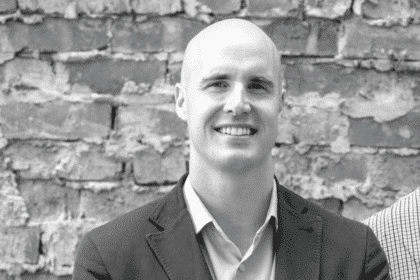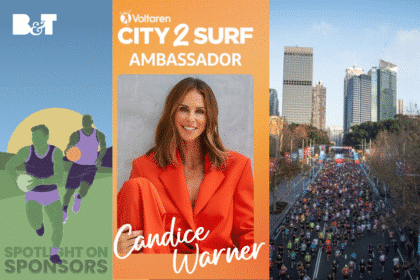We’ve been hearing fairly consistently for the last five (10?) years that money is tight, consumers are scared and it’s a tough time for anyone and everyone involved.
However, that might be starting to change.
A panel of industry experts told a crowd at 12-Micron in Sydney last week that now is the time for savvy agencies and marketers to steal a march on their rivals by investing in long-term branding building and forging deeper and more strategic relationships with partners.
Now, that might sound like common sense—perhaps it should—but it isn’t for everyone.
Growing, without the pain
“The number one thing that we should be doing now and recommending for our brands—depending on which role you’re in—is about spending for growth. It’s all about investing in your brand right now,” explained Sarah Keith, group managing director of Active International.
“Mark Ritson did some fantastic work through COVID and post-COVID ensuring you take the opportunity while there’s space and while media is potentially well-priced—I’m not going to say cheap, but where there is less demand. Move into that space and ensure you’re getting that your share of voice, share of mind and that you accelerate out the other side.”
Keith would know, having served in senior roles right across the industry with Involved Media, Publicis Media Exchange and Network 10 to name but three.
That said, it might appear harder for smaller brands—particularly start-ups or scale-ups—to find the free cash to invest in buying above-the-line marketing. It’s easier, though not necessarily cheaper these days, to place ads through the large social platforms. It would certainly appear easier to track success, right? If it seems a risky step for a start-up or scale-up to get into brand building activity, Keith’s business has developed a product—Launchpad—which co-funds that investment specifically for companies at this stage of their growth.
“Now’s the time to think big and act bigger—to sort of steal the title of Jason Jennings’ book Think Big, Act Small,” said fellow panellist Toby Barbour, co-founder of Connected Commerce.
“But that was about large multinational brands and not losing the magic of that entrepreneurial spark. The play on that, thinking big and acting bigger, is that most start-ups and scale-ups get the tension between vision, strategy and tactic a bit out of balance. Sometimes you’ve got to put the bigger vision and strategy out there, own it and then work out how you’re going to execute it. But the real skill and trick is actually in trusting the process.
“Most brands get really confronted with being able to hold the line, demonstrate the patience and trust the process to the outcome and they slip back into that tactic, which is not a strategy. I know we’ve got to adapt and be agile but you’ve got to trust the process through that first stage of growth.”
Walking the walk
One brand certainly trusting in the process is Posca Hydrate. Founded by comedian and media personality Merrick Watts and panelist Ed Stening, formerly marketing director of Lion. Stening explained that many start-up brands are very focused on bottom-of-funnel digital media.
“We’re taking a very different approach with a good mix of above and below [the-line]. We’re investing quite heavily in above-the-line, we see that as building trust, building credibility. Australia is a very conservative market and being able to have that reach of brand awareness is very important to us,” he told the audience.
Stening added that brands could find a lot of “value” in the media market at the moment, giving smaller brands the “chance to actually go a little bit bigger”. Though brands, he said, should invest in the long and the short, Posca was focused on these four aspects of its business: get the reach, tell the story, get “liquid on lips” and have “really strong” distribution.
Liquid Death, the US-based mountain spring water brand, had been held as an example of the power of long-term brand building for startups, prior to its relatively rapid pullback from operations in the UK. Stening explained that rather than see it as a cautionary tale for Posca, Liquid Death in fact served as an exemplar—on everything but its supply chain management.
Barbour concurred that there were many great lessons for start-up and scale-up brands in space.
“Build the brand, build the customer base, project that scale. Do everything that Ed’s doing with Posca. The other side of it is going slow to go fast, that’s building vertical integration and supply and distribution channels,” he said.
“We have two clients working in each stream. I don’t think one is right or wrong but I think you’ve got to be really committed to that pathway because if you scale too quickly and you don’t have your supply chain bedded down, then you have problems. But if you go too slow and you don’t build your brand or customer, other competitors can come in and eat your plate.”
Instead of only chasing the easily tracked conversion that sits at the heart of digital, bottom-of-funnel media, added Barbour, brands should “trust the process” and play both sides of the line. That’s where the right partners can help mitigate what might be perceived as risk, through the strategic, financial or advisory support offered by Active or by Barbour’s Connected Commerce business.
Deeper agency partnerships
The panel felt agencies have a significant role to play, too. Rather than simply being a pass-through to book spots, dots and digital for their clients, today’s agencies should be working hand-in-glove as an extension of their client—not a simple service provider. It’s something that Stening said his media partner, indie agency Affinity, was excelling with.
“We actually shared their office when we first started! We spent a lot of time focusing on those business challenges. We hear that a lot from the market but rarely does it actually happens,” he said.
Keith explained that media agencies must talk the language of business beyond the pitch, “we’re talking about the overall business and business growth”.
“Everyone has a ‘proprietary model’ or a way of talking about growth and value. But you should be talking about how share of voice translates into share of market,” she said.
“Brands, let an agency in the tent. Agencies, when you’re in the tent, create value and learn business acumen,” added Barbour.
“If a brand lets [agency] people in, you’ve got the very best minds in agencies thinking on your business for free because they want to create value. The more insights they understand about your brand and business, the more they’re going to feel like they can actually influence an outcome, the more they’re going to think about it and work on it.”
The next headwind
For Barbour, and the rest of the panel, the challenges facing the Australian economy were not unique—even though they may sometimes feel like it. But nor were these challenges permanent.
The business world is cyclical but the strategies for brands to lift themselves out of troubled economic times remain the same.
“Understand your client’s business drivers and strategies and contributing to that, that makes you better positioned to create value every single day,” said Barbour.
“Five or 10 years ago, the consultants were coming in, now we’re managing geopolitical risk. There’ll always be the next headwind. The fundamental behind that is, if you want to be an integrated business parter, you’ve got to know their customer, their brand and their business. If you’re the brand, you’ve got to be transparent and share and develop that partnership.”
For Stening, the notion of circularity is key to understanding our world.
“Most of us went through 2007, some of us went through the 90s. It’s been a lot worse than where we are today. Walk through the city on a Thursday night and tell me there’s an economy problem.”
Keith added that while growth in the economy might not be where most would hope, “once we get comfortable in the market, there’s still money to be made.
“Whatever cycle the economy, or the media market is in, we create customised trading models and investment positions with our clients. We help them maximise the value they can generate in the current market, increase share of voice and mental availability, and ultimately return on ad spend”.
You should just hope that your rivals haven’t cottoned on, yet.
Head to Active International to learn how you can de-risk to grow.





























